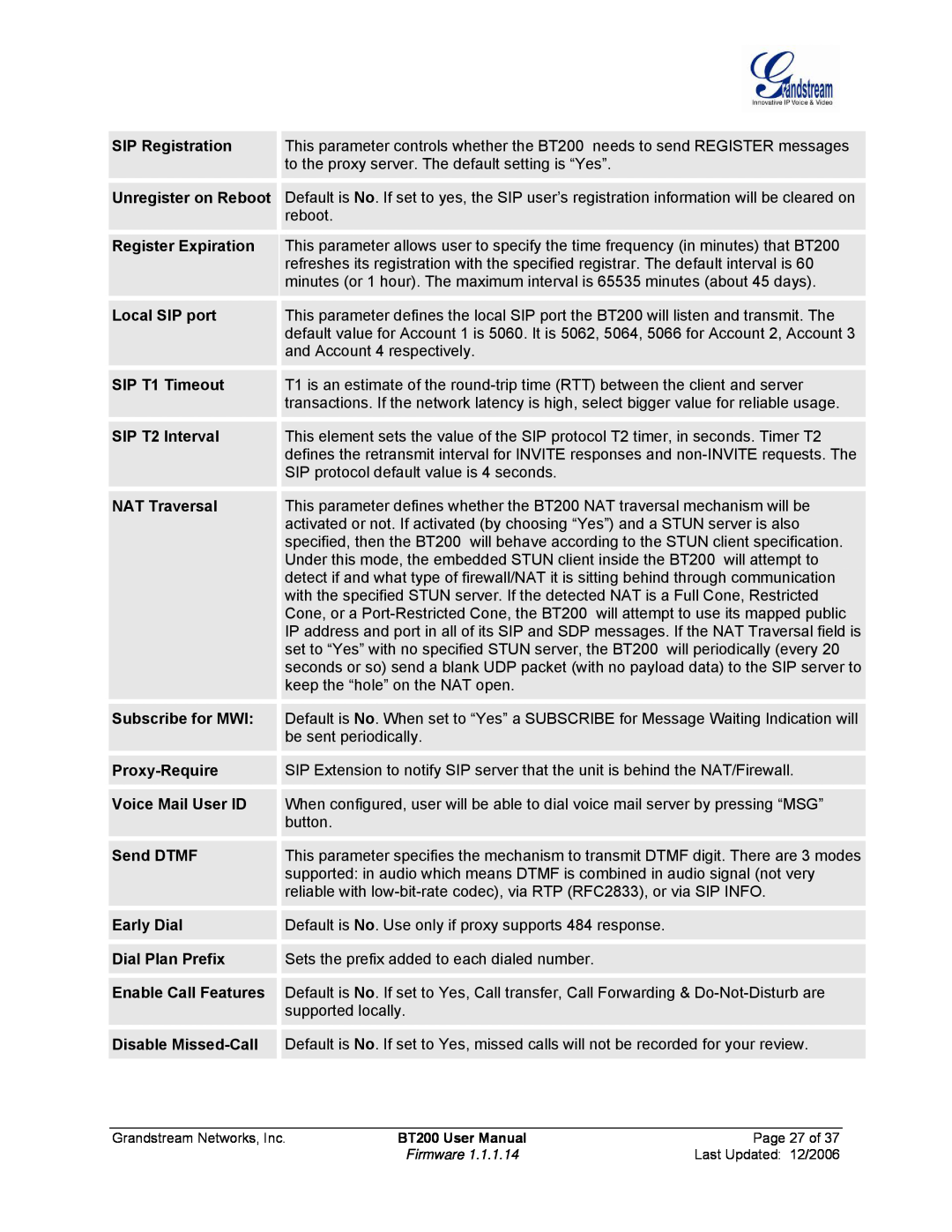
SIP Registration
Unregister on Reboot
This parameter controls whether the BT200 needs to send REGISTER messages to the proxy server. The default setting is “Yes”.
Default is No. If set to yes, the SIP user’s registration information will be cleared on reboot.
Register Expiration
This parameter allows user to specify the time frequency (in minutes) that BT200 refreshes its registration with the specified registrar. The default interval is 60 minutes (or 1 hour). The maximum interval is 65535 minutes (about 45 days).
Local SIP port
SIP T1 Timeout
SIP T2 Interval
NAT Traversal
Subscribe for MWI:
Voice Mail User ID
Send DTMF
Early Dial
Dial Plan Prefix
Enable Call Features
Disable
This parameter defines the local SIP port the BT200 will listen and transmit. The default value for Account 1 is 5060. It is 5062, 5064, 5066 for Account 2, Account 3 and Account 4 respectively.
T1 is an estimate of the
This element sets the value of the SIP protocol T2 timer, in seconds. Timer T2 defines the retransmit interval for INVITE responses and
This parameter defines whether the BT200 NAT traversal mechanism will be activated or not. If activated (by choosing “Yes”) and a STUN server is also specified, then the BT200 will behave according to the STUN client specification. Under this mode, the embedded STUN client inside the BT200 will attempt to detect if and what type of firewall/NAT it is sitting behind through communication with the specified STUN server. If the detected NAT is a Full Cone, Restricted Cone, or a
Default is No. When set to “Yes” a SUBSCRIBE for Message Waiting Indication will be sent periodically.
SIP Extension to notify SIP server that the unit is behind the NAT/Firewall.
When configured, user will be able to dial voice mail server by pressing “MSG” button.
This parameter specifies the mechanism to transmit DTMF digit. There are 3 modes supported: in audio which means DTMF is combined in audio signal (not very reliable with
Default is No. Use only if proxy supports 484 response.
Sets the prefix added to each dialed number.
Default is No. If set to Yes, Call transfer, Call Forwarding &
Default is No. If set to Yes, missed calls will not be recorded for your review.
Grandstream Networks, Inc. | BT200 User Manual | Page 27 of 37 |
| Firmware 1.1.1.14 | Last Updated: 12/2006 |
